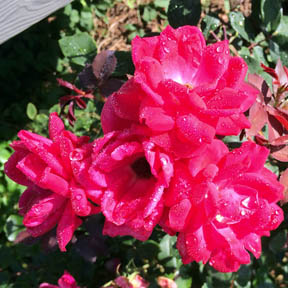By Carrie Perrien Smith
I love the flexibility and freedom that empty nesting provides me.
We all give so much to our family during our child-rearing years that we need the break — but never for long. We have much left to give so we turn to our communities or dive deeper into our career.
Like so many other parents, I volunteered to help with activities my daughter was involved in. We build a nice volunteer résumé and a strong portfolio of skills in the process. By the time our kids are grown, we are ready to stretch our wings even more.
We sharpened our communication, sales, motivation, project management, and human relations skills. Most of us are ready for the challenge.
Over the last ten years, my résumé has grown to include leadership roles in eighteen charity organizations. They all challenged me — in good ways and uncomfortable ways. But it’s all good. I promise. At the bare minimum, I learned a lot.
Leading takes some guts, whether it is in your company or your community. Sometimes just overcoming a difficult situation with your dignity intact is a big victory. But at the bottom of it all, we gain that sense of accomplishment that comes from serving with purpose.
Finding the Place to Reflect on My Challenges
I’ve been pruning these overgrown knockout rose bushes at the entry to our neighborhood. You know the ones. They are popping up in mass plantings because they flower all summer.
The only problem is that they aren’t maintenance-free. Their spent blossoms never drop unless you prune them. Plus they are prone to damage and disease. And the older branches must be pruned away occasionally to make room for the newer growth. They just need some tender loving care to be all they can be — a lot like humans.
 There are eight of these bad boys in the entry flowerbeds. They hadn’t been tended since the flowerbeds were replaced last summer. I tackled it an hour here and there over several days.
There are eight of these bad boys in the entry flowerbeds. They hadn’t been tended since the flowerbeds were replaced last summer. I tackled it an hour here and there over several days.
Now I can drive into the neighborhood without thinking “someone should really do something about those.” In a couple weeks, they’ll be tricked out with new blooms and leaves for the second half of summer.
Tending a flowerbed is a great time to slip away into my thoughts. This time, I needed to reflect on why I choose to lead. It isn’t easy but I learn so much from the experience, and it gives me a unique opportunity to mentor others. And together, we accomplish more than I could ever accomplish alone.
I’ve traveled a tough few days as a leader in my current volunteer role. I needed these moments alone to think. I had some hard questions and needed to prepare for some uncomfortable conversations. These eight unkempt thorny wonders gave me the time to sort out the events of the previous few days.
And There I Heard a Still, Quiet Voice
I’d grab my leather work gloves, pruning shears, and bucket each morning and head over to tackle a pair of the sloppy, uneven bushes. Like an old friend, the warm morning air embraced me. And then a still, quiet voice whispered lessons in my ear as I carefully pruned, making decisions about what goes and what stays.
Each day, it would reveal a new lesson or two until I had these eight. Maybe each lesson was a gift for completing a bush. At the end of it all, I had the courage to address what I must and the peace to forgive what I didn’t.
It takes courage to prune a branch when it’s in full bloom, even when you know the branch is negatively affecting the overall health and structure of the bush.
You can’t be afraid of the thorns. To prune correctly, you have to get to the base of the plant. If you prepare with the right gear and evaluate the bush carefully, you can gather most of the information you need to make the cut. The rest is intuition.
Trust your intuition.
The dead and diseased limbs have to go. Don’t wait. They will damage the healthy parts of the bush. Wait and you’ll have to replace the whole thing. Then you’ll have a new undersized bush where an established bush once thrived.
Sometime a scrawny branch needs nurturing for a year, but it’s worth keeping because it will be important to the structure in the future.
A bush with strong, established roots is worth pruning, nurturing, and developing.
You make a few mistakes when pruning. But if you make the kindest cuts, the bush will do its part in the recovery. After all, every novice gardener deserves a few passes on their mistakes.
Prune your own bushes first. Teach others to prune but don’t complain about the way others prune their bushes — unless you want to prune their bushes too.
New Growth for Old Bushes
By the time you read this post, all the uncomfortable leadership tasks I need to handle for today will be behind me.
I’m sure they will go better than I anticipate. That is the way it usually goes, isn’t it? Our organization will be better for it. In fact, we’ll all be better for it. And these eight mature rose bushes will be ready for the next phase of their growth — just like me.
 Carrie Perrien Smith is mama to Darcie and a pack of black dogs (Jazmin, Midgieboy, and Chloe — in pack order), grandma to Robert, wife to world-traveler and Walmart-blue-bleeding Tom, daughter to Wayne and Phyllis, speaker bureau and publishing company owner, Business: Engaged! small business radio show host, community activist, singer in a party band called Paper Jam, and home improvement enthusiast. Follow her on Twitter @soarwitheagles or contact her at carrie@soarhigher.com.
Carrie Perrien Smith is mama to Darcie and a pack of black dogs (Jazmin, Midgieboy, and Chloe — in pack order), grandma to Robert, wife to world-traveler and Walmart-blue-bleeding Tom, daughter to Wayne and Phyllis, speaker bureau and publishing company owner, Business: Engaged! small business radio show host, community activist, singer in a party band called Paper Jam, and home improvement enthusiast. Follow her on Twitter @soarwitheagles or contact her at carrie@soarhigher.com.
